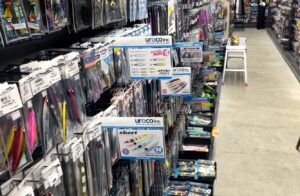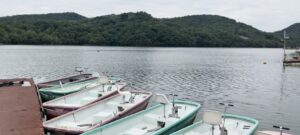Trout of the Far East: Japan’s Endemic Salmonids Species
For trout anglers in Europe and North America, the idea of remote, highland streams and secretive native species is always alluring. While the brown trout of the Alps or the brook trout of Appalachia draw attention, few are aware that Japan is home to its own ancient and endemic trout lineages, species shaped by volcanic landscapes, isolated mountain valleys, and millennia of geological drift.
In this blog, you can see species of Arctic chars (Salvelinus family) in Japan.
Iwana (Salvelinus leucomaenis)
Known commonly as the white-spotted char, iwana is Japan’s answer to the Arctic char. This species evolved in isolation within Japan’s cold mountain streams and lakes. Its striking white spots on a dark, olive-to-black back give it a ghostlike appearance in clear water. It thrives in high-gradient, forested headwaters, often requiring a hike through deep forests or snowmelt canyons to find. Some populations are amphidromous, descending to brackish waters and returning to spawn upriver, much like sea-run browns or steelhead.
For fly anglers, iwana is a dream fish, aggressive rises to dry flies, explosive strikes, and an almost mythic beauty that rivals the finest char of Iceland or Canada.
Below are the species or subspecies of iwana.
Amemasu or Ezo iwana (Salvelinus leucomaenis leucomaenis)
In this species, the landlocked form is called Ezo Iwana, and the anadromous one is called Amemasu. This species is the northern, sea-run form of iwana, primarily found in Hokkaido and parts of the Russian Far East. The sea-run form, amemasu, migrates between cold coastal waters and inland rivers and lakes, much like sea trout or Arctic char. Large specimens, up to 70 cm, can be caught in brackish estuaries or while staging in river mouths before spawning. Their behavior, environment, and impressive size make them a standout among Japan’s salmonids.
What makes amemasu or Ezo iwana especially fascinating to ichthyologists and anglers alike is the emergence of distinct regional forms or ecotypes that are not yet formally classified as subspecies, but show consistent morphological and behavioral variation.
Some of the key regional types include:
Miyabe iwana (Salvelinus malma miyabei)
It dwells only in Lake Shikaribetsu, Hokkaido. A non-migratory, lake-resident population known for its relatively deep body and vivid coloration. It thrives in deep, oligotrophic lakes with clear water and rocky bottoms.
Oshorokoma (Salvelinus curilus)
Once it was considered to be the same species as Dolly Varden trout (Salvelinus malma) but currently this kind of iwana is recognized as a different species. It lives only on the northern Island, Hokkaido. It has the distinctive orange/red spots on the body, while some variations of this species have no colored spots. There are landlocked forms and sea-run forms. The landlocked one has parr marks.
Though still under scientific review, these ecotypes show localized adaptation and incipient speciation, making Hokkaido’s amemasu/ezo-iwana not just a worthy quarry, but also a living case study in evolutionary ecology.
Nikko Iwana (Salvelinus leucomaenis pluvius)
A recognized subspecies of iwana, the Nikko iwana is geographically restricted to central and northern Honshu, the main island in Japan. It is larger, with more pronounced white markings and a heavier build. This trout is a product of Japan’s ancient volcanic lakes and glacial refuges. While not genetically isolated enough to be a full species, its distribution and behavior make it a distinct trophy for collectors of wild trout experiences.
Yamato Iwana (Salvelinus leucomaenis japonicus)
Another subspecies of iwana is Yamato iwana. It has less obvious white spots and more colored spots than Nokko iwana has. It is distributed in the pacific coast side of Honshu.
Gogi (Salvelinus leucomaenis imbrius)
It is another subspecies only seen in the mountains of Chugoku Mountain range. It is the distinctive patterns that the white spots extend to the front of the head (or nose.)
Why It Matters to Global Trout Enthusiasts
The trout of Japan are not just for biological curiosities. They are a testament to how geography, isolation, and climate sculpt unique species and behaviors. For European and North American anglers seeking something beyond the familiar, Japan offers a landscape of ancient mountains, crystal rivers, and trout that have never seen a #14 Elk Hair Caddis.
From the windswept rivers of Hokkaido to the shadowy headwaters of Honshu, Japan’s trout provide not just a new destination, but a deepening of the global trout angling narrative.

